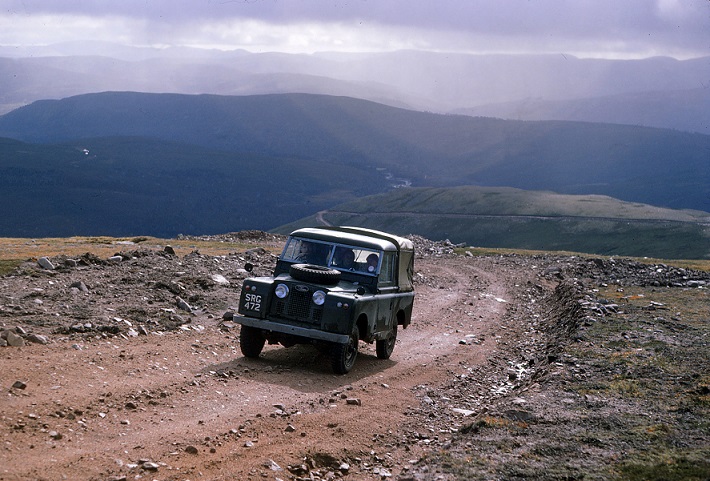
Although I have been over and around Beinn a’ Bhuird several times I had never walked up the line of the infamous road which, in the last century, became a cause celebre among wild land campaigners.
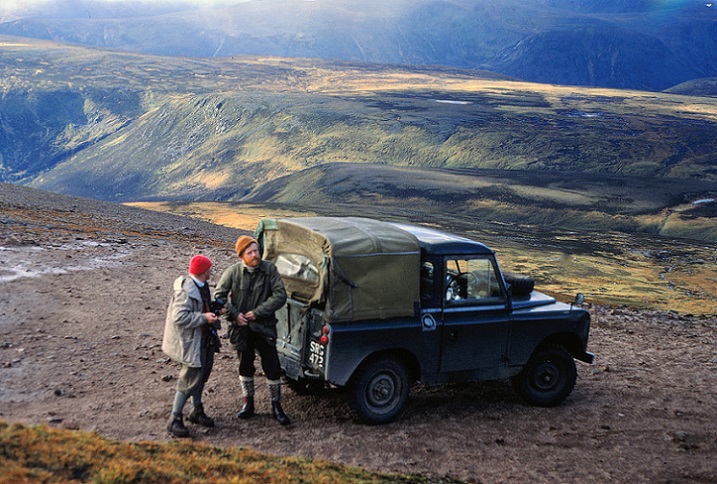
Adam Watson was at the forefront of recording and raising awareness of how wild land was being eroded by the creation of new roads in the Cairngorms and elsewhere. It is interesting that the captions to his slides describe them as roads, not “hill tracks”.
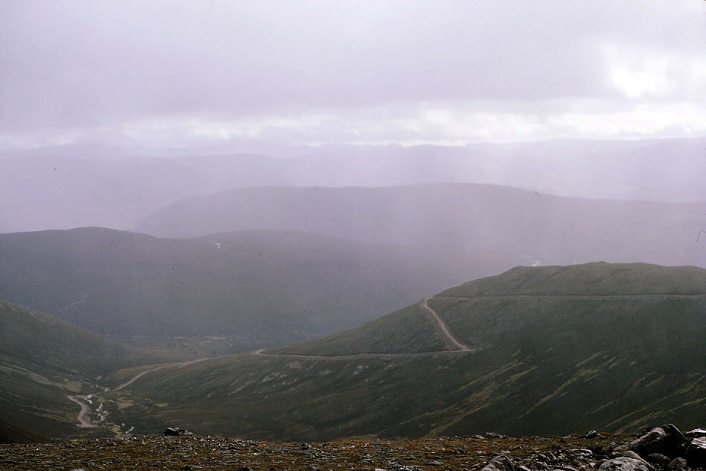
It was thanks to campaigners like Adam that when the National Trust for Scotland bought the Mar Lodge Estate in 1995 one of the first things it did was to remove the road up Beinn a’Bhuird. While I had seen photos of the restoration work (see here for example) I had long wanted to see it for myself and did so 10 days ago.
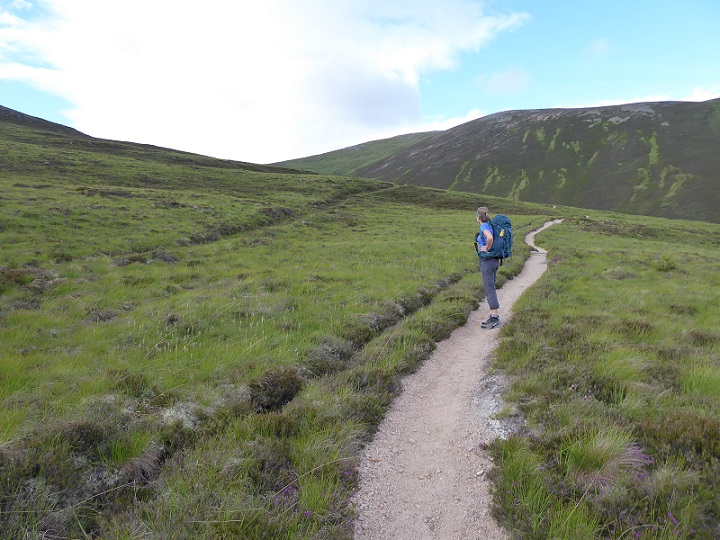
Low down, vegetation now completely swathes the line of the former road, although it is still clearly visible. The footpath is just far enough away to remove the temptation to walk the old line (I went over to have a look and there was no sign of trampling).
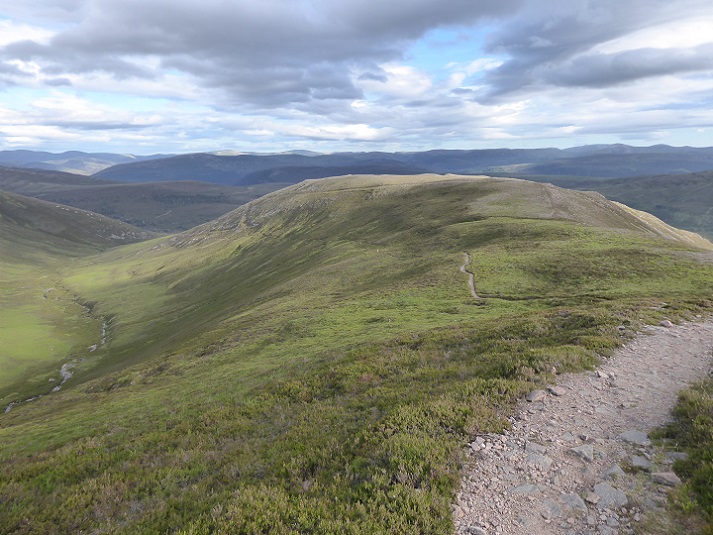
The same is the case on the lower parts of the ridge, vegetation now covers the former track although the line remains visible. With the footpath having been constructed on a more direct line than the former road, the extent to which people notice it partly depends on the light conditions.
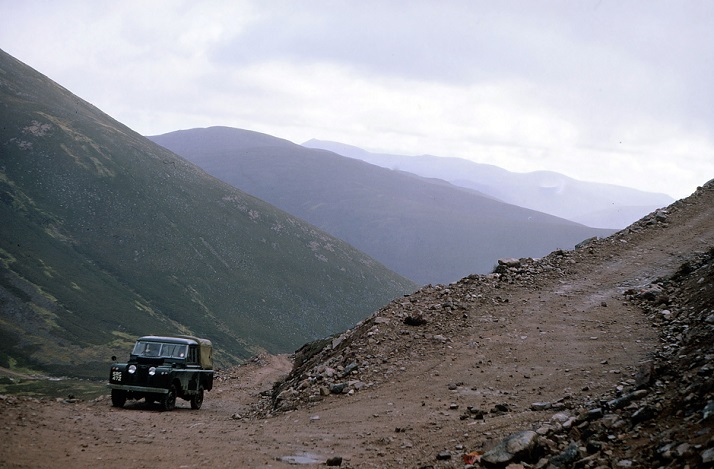
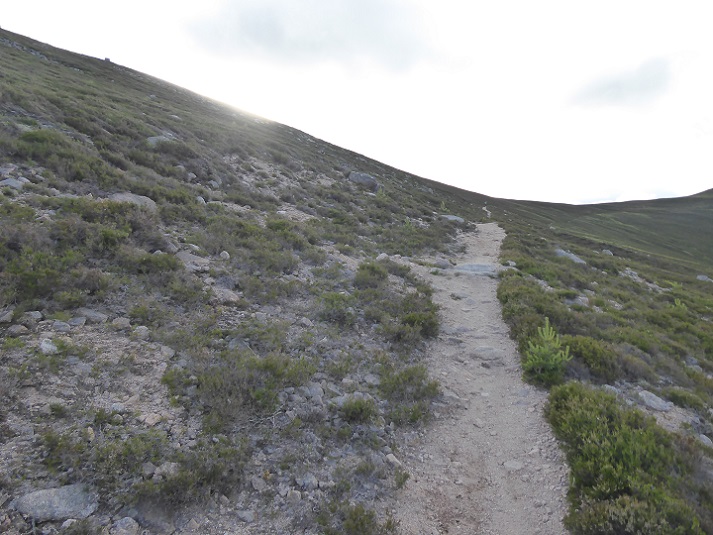
The challenge that was involved in trying to re-fill the bench that had been cut across the hillside and redistribute the disturbed boulders to repair the landscape scar was enormous. Had the vegetation matched that above and below, walking along you might not have known that this was once a road. But these are poor soils in a harsh environment and it make well take another 25 years for the disturbed ground to recover fully.
There is a similar story higher up where Adam’s photos show a swathe of destruction along the ridge:
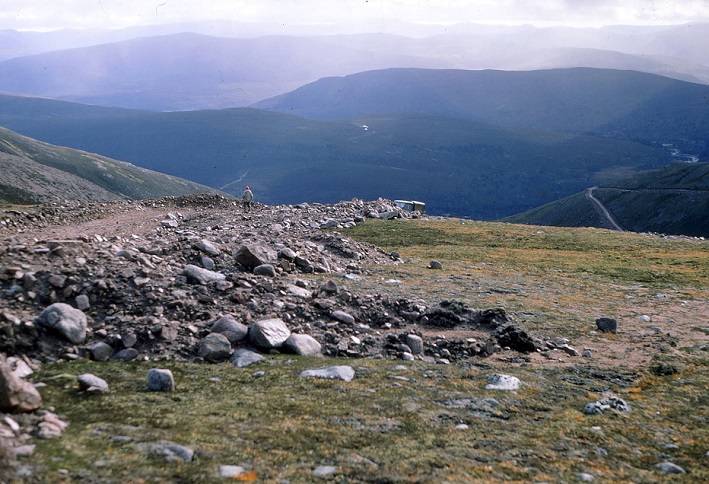
The landscape restoration here too has been of a very high quality with almost no evidence of the spoil that once bordered the road:
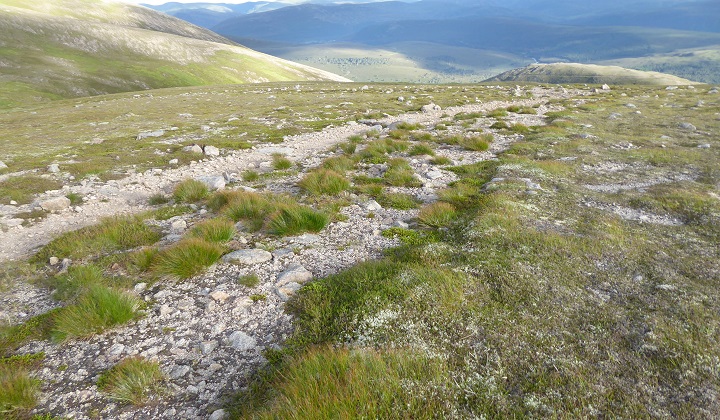
The vegetation recovery, however, has been poorer than lower down. This will be partly because of the altitude, which means vegetation takes longer to colonise bare ground, but it is because the broad nature of the ridge and accomodating ground which makes it very difficult to stop walkers or mountain bikers wandering off the path onto the line of the former road beside it.
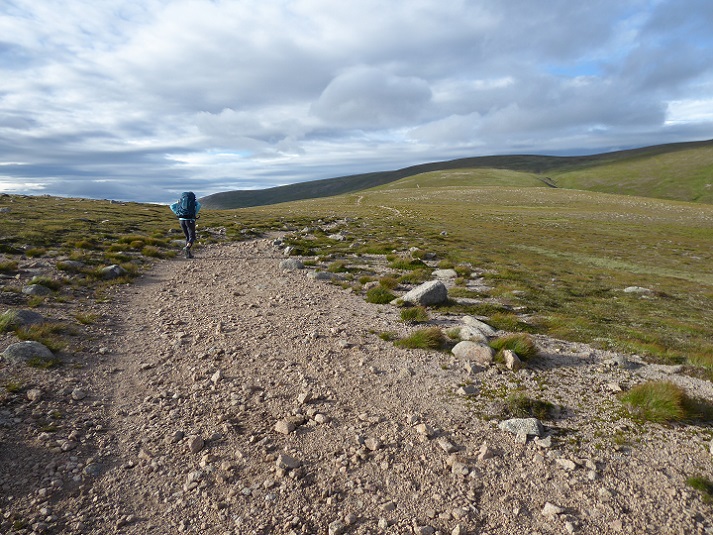
As a result of this there were a couple of places where the path had morphed back into a road.
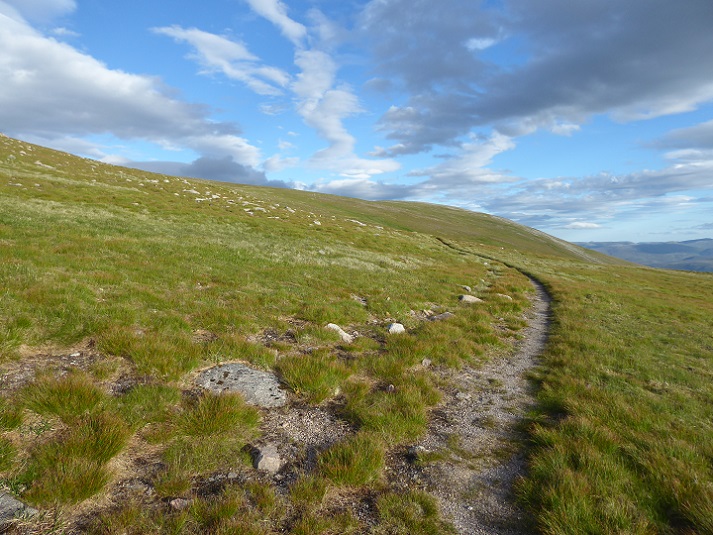
But generally the recovery of vegetation appears to have been pretty successful and it is continuing to colonise the bare ground despite more people walking and a lot more people mountain biking on the hill.
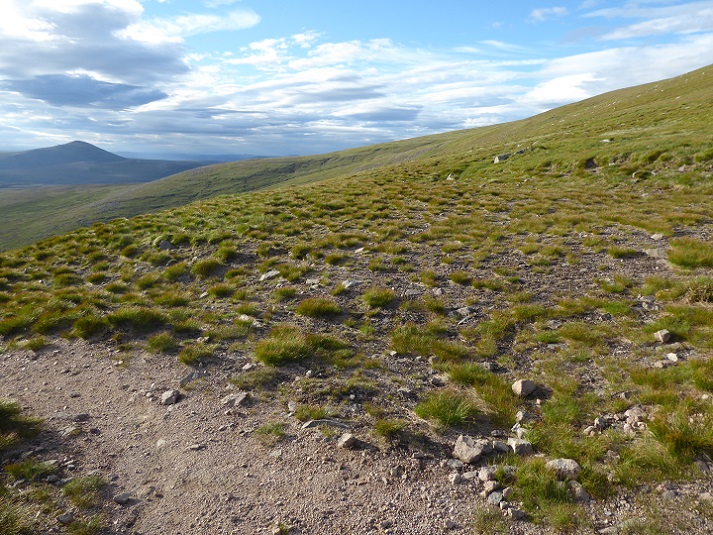
Fifty-five years after Adam took these photos, Beinn a Bhuird remains one of the few cases of a hill road being removed from the Cairngorms or anywhere else in Scotland. Wildland Ltd in Glen Feshie is about the only private estate to follow NTS’s example (see here).
In the 1990s, Kincardine and Deeside Council adopted a policy of mapping existing hill roads and opposing new ones (as a result, I understand it, of pressure fro m campaigners including Adam and his wife Jenny). With the abolition of district councils, that initiative was lost and the Cairngorms National Park Authority then took almost 15 years before it seriously started to try and control the proliferation of hill roads. CNPA Board Members should take a look at then and now on Beinn a Bhuird, be inspired and take the further stop of removing the worst of the hill roads from the National Park.
Great work by Adam and others in getting the track removed, but sad to read that mountain bikers are fanning out from the track and creating track-creep/spread in places. Indeed the whole issue of mountain biking on fragile, high-nature value arctic/alpine summit plateaux is worrying, given the significant decline in montane flora and fauna over the past decade.